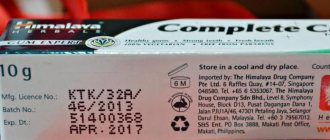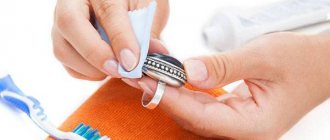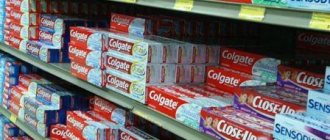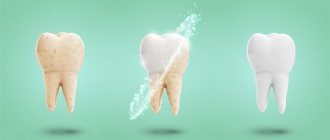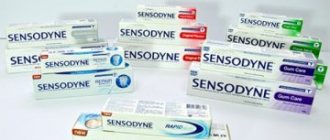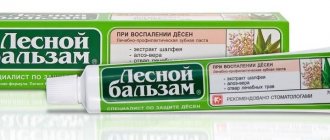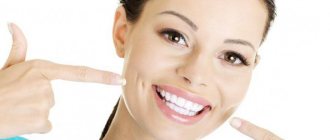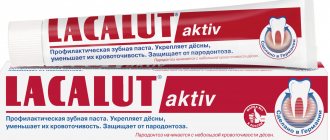Why do you need to brush your teeth?
Oral hygiene is not only a matter of aesthetics. It is due to medical reasons. A plaque constantly forms on the enamel, consisting of: • food particles; • saliva; • waste products of microorganisms inhabiting the oral cavity.
The process of plaque deposition does not depend on whether a person ate in the interval between brushings. If it is not removed, over time it turns to stone. Contamination not only creates a cosmetic defect. Deposits contribute to the violation of the integrity of the enamel. Pathogenic bacteria penetrate into the resulting cracks and actively multiply under conditions of poor hygiene. This is how caries begins with all the known consequences. These microorganisms also attack the gums. In people who neglect to brush their teeth, gingivitis becomes chronic. If the inflammation is not treated, complications in the form of periodontitis and periodontal disease are possible. As a result, the root no longer holds in the socket and the tooth falls out.
How to choose healthy dairy products
To ensure that purchased dairy products only bring benefits, you need to follow a few simple rules.
- Study the information on the packaging: check the expiration date and compliance of the stated storage conditions with those provided by the retail outlet.
- Do not buy milk and dairy products secondhand from random sellers without appropriate declarations and certificates of conformity.
- In case of doubt about the quality of the goods, supporting documents should be required - they must be provided to the buyer.
- When choosing sour cream, you need to pay attention to the name so as not to buy a sour cream product based on vegetable fats.
- The previous advice also applies to cheese: it is necessary to distinguish between the names “cheese” and “cheese product”. In the second case, a substitute is used instead of part of the milk fat.
- You should choose yoghurts with a minimum shelf life and the shortest composition [6].
Consume high-quality dairy products in the required quantities, and your teeth will remain strong and healthy throughout your life.
How to brush your teeth correctly?
It is a mistaken idea that everyone can do this. There are a number of rules, many of which are either unknown or ignored. However, only compliance with them guarantees effective cleaning of the enamel: • Carrying out hygiene procedures not only at home, but also at the dentist. • Rational selection of brushes and paste. • Using the optimal teeth brushing method. • Using dental floss, brushes and mouthwash. • Taking into account the condition of the gums, the presence of braces and dentures. • Compliance with the rules for storing, cleaning and replacing brushes.
Tablets for determining plaque will help you understand whether you have achieved your goal. They demonstrate whether unwanted deposits are present on the enamel. They also suggest which areas are not being worked through carefully enough.
Some tips for teeth whitening
If you decide to whiten your teeth at home, follow these recommendations:
- Before bleaching, be sure to see a doctor.
- Use only gentle professional products recommended by your dentist - gels, pencils, mouth guards, strips.
- Do not use aggressive folk remedies such as soda, hydrogen peroxide, lemon, activated carbon.
After whitening, increased tooth sensitivity is often observed, and bleeding gums may occur. To reduce the negative impact of bleaching agents, it is important to follow several rules after the procedure:
- Use a toothbrush with soft bristles. Hard bristles will further damage the enamel and increase its sensitivity.
- Avoid using toothpastes with abrasive particles. After whitening, it is better to purchase toothpaste for sensitive teeth.
- Use a waterpik or dental floss after meals.
- Avoid mouth rinses containing chlorhexidine.
It is important to remember that you can whiten your teeth, but not your fillings. Foreign material retains its properties and color even when exposed to hydrogen peroxide or carbamide peroxide.
To keep your teeth light for as long as possible after whitening, organize a “white” diet. Its essence is to avoid products that can stain the enamel. This is red wine, black tea, coffee, red fruits, berries and vegetables, fruit juices and fruit drinks, candies, carbonated drinks with dyes, chocolate, other sweets, etc.
It is also not recommended to smoke for several days after the procedure. Cigarette smoke quickly forms plaque on the teeth, which leads to their darkening.
Choosing a toothbrush
To completely clean the enamel from plaque, you need to choose a suitable brush. The easiest way to do this is by material. There are two options here - natural and synthetic. It is better to give preference to the latter, since they are quite elastic, and the tips of the hairs are usually rounded, which is safer for the gums. Bacteria multiply faster on natural materials.
In terms of the stiffness of the bristles, toothbrushes are: • Soft. They are best taken for children, adolescents and people suffering from gingivitis. • Average. A universal option for people without dental problems. • Tough. They help fight hard plaque and can be used only when indicated.
The configuration of the bristles should be discussed with your dentist. It will tell you where more sediment collects. For example, if you need to better work on the necks of teeth, bristles collected in bunches can handle this.
Diagnostics
If symptoms appear regularly, it is recommended to consult a specialist. Modern medicine offers a number of ways to diagnose this problem.
Examination options to determine lactase deficiency:
- genetic blood test;
- hydrogen breath test;
- urine and blood tests to determine galactose;
- lactase load test;
- determination of lactose activity using samples of the small intestinal mucosa.
We recommend watching the video:
It is easy to determine that diarrhea after milk is a symptom of enzyme deficiency. On an empty stomach you need to take 50 g of lactose. If the problem is related to enzyme deficiency, then the symptoms will be characteristic.
Everything is quite simple: if you drink milk, symptoms appear within 30 minutes, and after 3 hours all discomfort will pass.
Pasta selection
Pastes are hygienic, preventive and therapeutic. The first ones solve the only problem - clean the enamel. The latter, due to the antiseptic component, help prevent the development of gingivitis and caries. Still others are prescribed by dentists for therapeutic purposes; it is better not to use them on your own.
Toothpastes are also distinguished according to the results of use: • whitening - slightly lighten the enamel, but you should not expect drastic changes from them; • strengthening – contain fluoride, good for enamel health; • desensitizing - reduce sensitivity; • anti-inflammatory - help with gingivitis.
Abrasiveness characterizes the degree of impact on plaque. The average value of this indicator is from 50 to 80. Higher values can be taken occasionally to lighten teeth. Lower abrasiveness is indicated for sensitive enamel and gums.
What is lactase deficiency
This phenomenon is associated with a lack of enzymes responsible for processing lactose.
A lack of necessary enzymes occurs:
- congenital;
- acquired.
When a child is born with lactase deficiency, the cause is genetic disorders. In 90% of cases, the problem with lactose processing is passed down from generation to generation.
Proper brushing of teeth: sequence of movements
For hygiene purposes, you need to accustom yourself to a certain sequence of movements.
After squeezing the paste onto the brush, you must: • apply it to the teeth at an angle of 45 or 90 degrees; • pass each one 3-4 times in the direction from the gums to the cutting edge; • treat chewing surfaces with circular movements; • Allow at least 30 seconds of brushing for each half of the jaw. Depending on the location of the brush and the direction of movement, there are three methods of brushing teeth. The most famous (90 degree brush, top to bottom movements) is the Leonard method.
The Bass method involves choosing an angle of 45 degrees and making vibrating movements. It is good because the bristles penetrate into the interdental spaces and partially work out the contact surfaces. With the Fones method, an angle of 90 degrees is taken and the brush moves in a circle. This further massages the gums, which improves blood circulation and protects against inflammatory processes.
How to deal with diarrhea after milk
What to do if diarrhea after milk has become a regular occurrence? It is necessary to undergo diagnostics to determine the causes of the problem.
If an allergy is diagnosed, dairy products must be excluded.
If a specialist confirms lactase deficiency, then it is necessary to change the diet. At the same time, reduce the amount or avoid eating foods containing lactose at all.
Sometimes diarrhea becomes a symptom of other diseases. The underlying cause must be treated.
Some medicines contain lactose. It belongs to the group of probiotics. Therefore, during treatment, you should warn your doctor about the problem with the body’s processing of lactose. The specialist will select an alternative drug.
Additional oral cleansing
Oral hygiene is not limited to two rows of teeth. For complete cleansing it is necessary to treat: • Interdental spaces. Dental floss or a brush will help remove plaque. • Language. To do this, use the relief surface of the back of the toothbrush or a special scraper. • Gums. They are partly cleaned with a brush: at an angle of 45 degrees, the bristles approach the edge and capture deposits. Rinse aid also helps. • Cheeks. You can go over them with the back of the brush, but they require more rinsing.
You need to start by removing the largest food debris. To do this, just rinse your mouth with water. Then comes the turn of fragments stuck in the interdental spaces - this is where floss comes to the rescue. Now you can take up the brush with the paste. Rinse aid is used last - to create a protective layer.
How to replace milk if you are lactose intolerant
Limiting the consumption of dairy products can lead to calcium deficiency. This is dangerous due to the deterioration of bone tissue. There is a risk of developing osteoporosis and pathological fractures.
It is necessary to increase your calcium intake by eating other foods.
We recommend watching the video:
It is recommended to use the following products in your diet:
- white cabbage, broccoli;
- salads
- spinach;
- turnip;
- eggs;
- chocolate milk.
Recently, lactose-free milk can be found on store shelves.
Cheeses supply the body with calcium. It is necessary to pay attention to varieties that contain little lactose, for example, mozzarella, cheddar and others.
Most people who are lactose intolerant can handle small amounts of dairy products. It is recommended to use them little by little.
How to brush your teeth with gingivitis?
Inflammation of soft tissues is not a reason to neglect hygiene. On the contrary, the more often cleansing is done, the less chance bacteria have to support the inflammatory process.
However, you need to take precautions: • choose brushes with soft bristles (preferably rounded); • choose a paste with low abrasiveness and containing medicinal herbs; • give preference to the Bass method, and abstain from the Fones method until remission; • move your hand more carefully to avoid painful sensations.
Cleaning time should not be shortened, even if the procedure causes discomfort. Sometimes dentists even recommend increasing it. Inflammation of the gums is accompanied by the formation of pockets. Where their edges lag behind, stone grows with particular intensity. This place deserves more careful study.
How to clean dental structures?
Dental structures in the mouth make adjustments to the cleaning process: • Crowns. More attention should be paid to the area where the gums come into contact with the prosthesis. • Bridges. A round mono-tuft brush is more suitable for them. • Veneers. The teeth where they are installed cannot be treated with floss. The ban does not apply to other methods. • Braces. The space under the arch and the area adjacent to the enamel is cleaned with brushes.
In all of the above cases, it is necessary to use an irrigator. Conventional cleaning devices are not able to penetrate all the places where plaque accumulates. There are no barriers for water. Under the pressure set by the device, it knocks out stuck food fragments, preventing them from decomposing or turning into stone.
How do plaque tablets work?
We usually contact a dentist to assess the quality of oral hygiene. It identifies areas that are not cleaned effectively and makes recommendations for replacing the paste or brush. But in between visits to the clinic, you can cope without the help of a doctor.
Special tablets, developed by the Swiss company CURADEN, will help with this. They are part of the CURAPROX range of dental care products. Determination of plaque occurs as follows: • the tablet is diluted in water; • after brushing, a person rinses his mouth with this solution, distributing it over his teeth; • deposits are stained, clean enamel remains intact.
The tablets also help distinguish soft plaque from tartar. The first one becomes pink, the second one becomes dark blue. This way you can understand whether it’s time to go for ultrasonic cleaning.
Why can diarrhea occur after drinking milk?
Dairy products occupy an important place in human nutrition. For children in the first year of life, this is the basic foundation. What to do if diarrhea appears after drinking milk? Why does this happen and what needs to be done to avoid this problem again?
The causes of diarrhea after milk can be the following:
- lactose deficiency;
- allergy;
- diseases of internal organs;
- incorrect combination of products;
- an infection that entered the body along with low-quality milk, it could be E. coli, salmonella.
A doctor can correctly identify the cause of diarrhea after conducting tests. If diarrhea does not go away for more than 4 hours, or the temperature rises, you should seek help from a specialist immediately.
Consequences of not brushing your teeth properly
Proper and timely cleaning of dental plaque is protection against oral diseases.
If you neglect it, the consequences will only increase: • Tartar forms. It gives off an unpleasant odor. If you do not carry out ultrasonic cleaning, it will become a favorite place for bacteria. • Bacteria will destroy the enamel. The abundance of pathogenic microorganisms quickly leads to caries. • Bacteria will cause your gums to become inflamed. Soft tissues are no less sensitive to them than hard ones. And this means bleeding, swelling and an unpleasant odor.
Possible complications are also worth mentioning. Caries develops into pulpitis, which requires removal of the nerve. This deprives the tooth of nutrition, as a result of which it sooner or later collapses. Progressive gingivitis is fraught with periodontitis and periodontal disease. Lack of oral hygiene leads to tooth loss. Restoring them is more expensive than the cost of a brush, paste and professional cleaning. Therefore, it is better to remember these simple rules and follow them.
Industrial toothpaste substitutes
Tooth powders
The most popular products include well-known tooth powders.
Teeth cleaning powders include:
- Calcium carbonate, which is the basis of the mixture;
- Supplements The role of additives is most often performed by clay, sodium carbonate and aluminum chloride;
- Flavors and flavoring additives;
- Excipients. Natural additives that perform certain functions are used as such substances. For example, essential oils have an antiseptic effect, sea salt has an antibacterial and anti-inflammatory effect.
The difference between powder when replacing toothpaste
- The abrasive particles of tooth powder are larger and sharper than those of toothpaste.
- The dry structure of the powder contains a large number of microparticles, allowing for better cleaning than a paste-like consistency.
- The powder contains fewer unnatural components than the paste.
- Toothpastes, due to their structure and the ability to add medicinal components, can be part of complex therapy for various diseases.
- Toothpastes, due to hermetic packaging and dosing capabilities, are considered more hygienic than powders sold in jars that open completely, causing the contents to come into contact with the external environment.
- Dry powders are not able to provide significant antimicrobial protection, unlike toothpastes.
- Tooth powder, being an abrasive product, may not be suitable for people with sensitive enamel.
- Toothpastes may contain quite aggressive chemical components sodium lauryl sulfate and triclosan.
- The powders are biologically neutral due to their natural composition.
Cons of tooth powders
The relative disadvantages of powders include the fact that with prolonged or frequent use, they, like whitening toothpastes, can lead to thinning of the enamel. In addition, if the powder is stored in an open container in close contact with the environment, it may become contaminated with pathogenic bacteria, which in turn can lead to infection of the mucous membranes of the oral cavity. Otherwise, tooth powder can be a worthy replacement for toothpaste in most cases.
Irrigators
Mechanisms that are acceptable for home use and essentially have no serious contraindications. The essence of the device is the targeted effect of a stream of water, which, due to the high pressure, washes away plaque and has a massaging effect on the gums.
It is customary to distinguish three main types of irrigators:
- Stationary. They operate from the network at a power of 220 Volts. The main operating mechanism is a compressor that provides water supply;
- Portable (travel). Work is carried out from a battery or batteries;
- Connected to the water supply network. Connect directly to the water tap using the included adapters.
The irrigator can have an effect on the oral cavity with both ordinary water and various medicinal compositions. In fact, this is one of the best options for replacing toothpaste for people of any age. The irrigator may be especially relevant for pregnant women, people who have orthopedic or prosthetic structures in their mouths, and people suffering from various diseases of the gums and mucous membranes.


